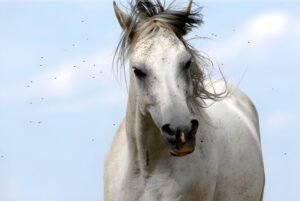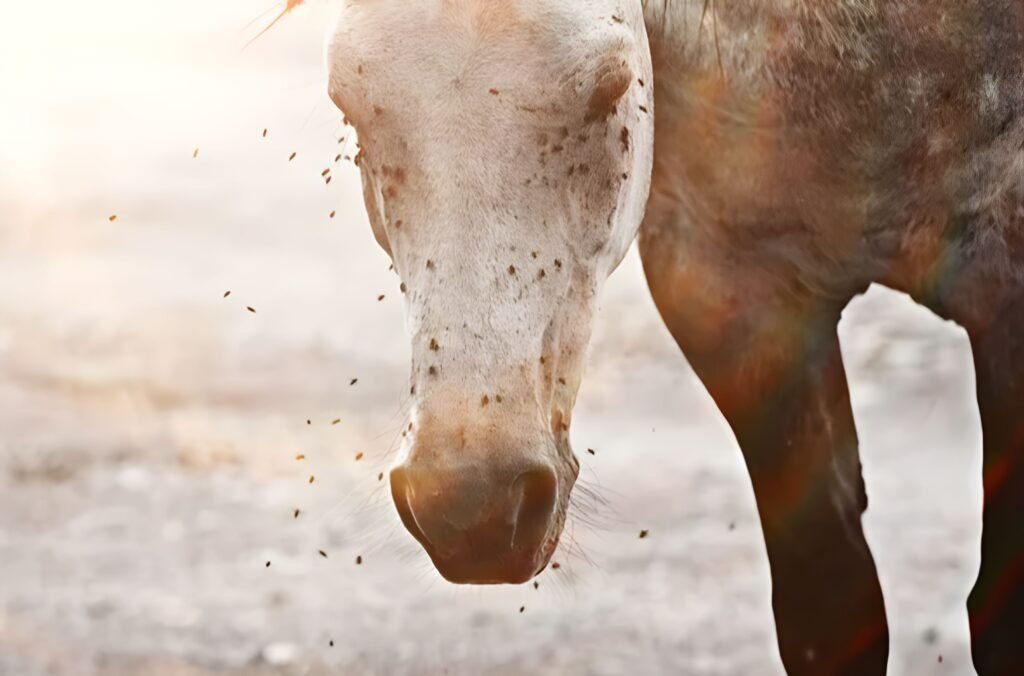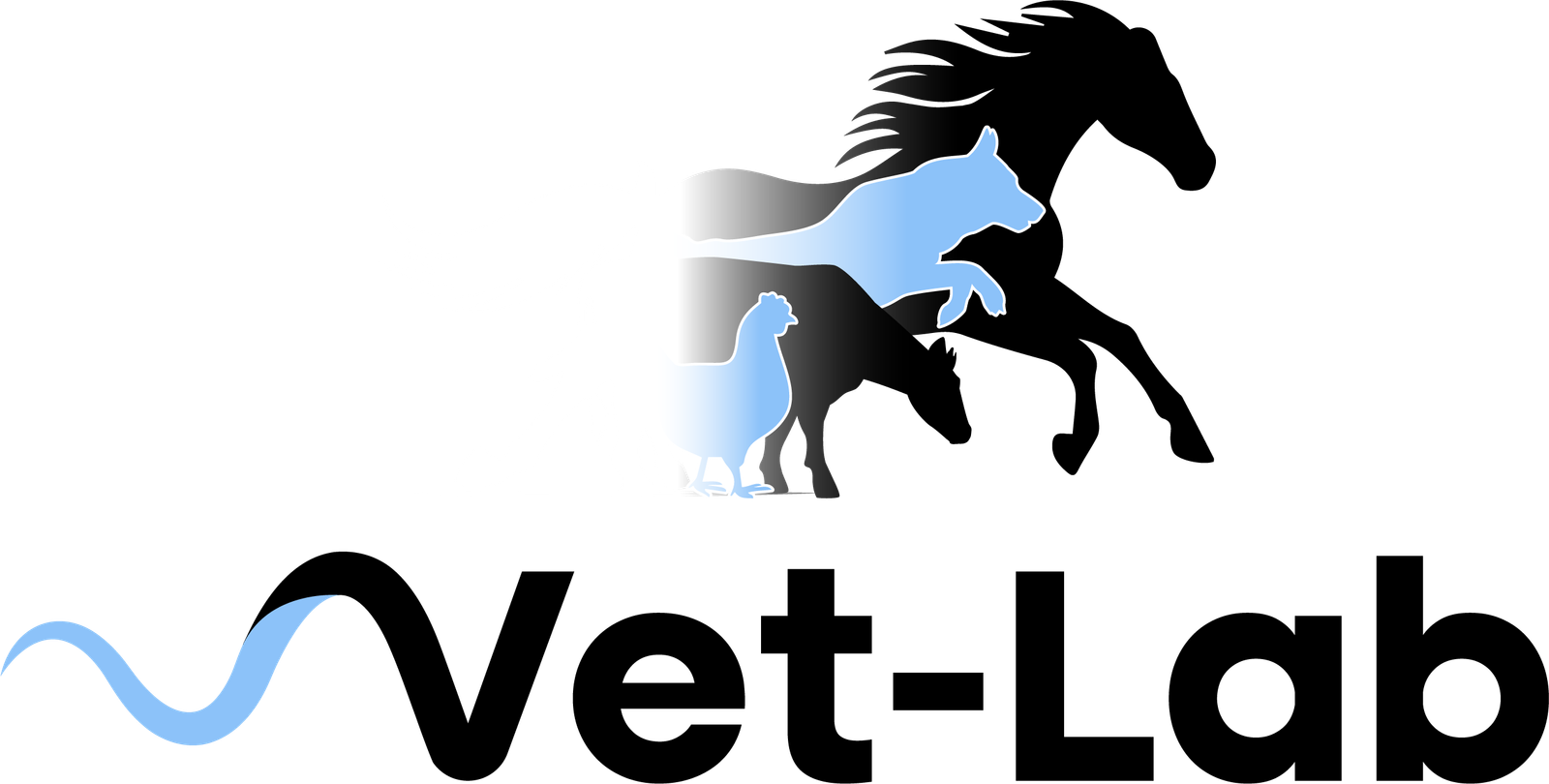Flies & Midges

Flies & Midges
The pleasure of extended summer days spent with our horses can be disrupted by the nuisance of flies. Various species of these insects, which in the UK encompass horse flies, midges, stable flies, house flies, blow flies, and bot flies, can be quite bothersome, each bringing its own set of challenges. While they can be merely irritating, they also pose serious health risks at times.
We explore effective strategies to reduce their bothersome presence around our horses.

STABLE FLY (STOMOXYS CALCITRANS), HOUSE FLY (MUSCA DOMESTICA), AND BLOW FLY OR BLUE BOTTLE (CALLIPHORIDAE SP.)
The biting stable fly, along with the house fly and blow fly, poses a significant nuisance, drawn to manure, dirty bedding, and other waste materials.
These flies tend to congregate around horses, particularly near mucous membranes and sweaty regions, where they feed on secretions from the eyes, nose, and sheath area.
This feeding behavior can lead to symptoms such as watery eyes, head shaking, and overall discomfort. Additionally, they are attracted to open wounds, which can impede healing and introduce bacteria that may result in infections.
To mitigate their presence, consider the following strategies:
Regularly clean fields by removing manure, ensuring stables and field shelters are kept tidy, and relocating muck heaps away from the stable and grazing areas to eliminate potential feeding and breeding sites for flies.
Wash horses after exercise and routinely clean their eyes, nose, and dock areas.
Cover any open wounds with dressings or barrier creams to deter flies and prevent fly strike, which occurs when fly eggs are deposited in wounds and develop into maggots.
Utilise long-lasting fly repellents or equip horses with fly collars, leg bands, or fly rugs treated with repellent.
Explore the use of fly barriers, such as anti-midge/fly turnout rugs, neck covers, fringes, veils, and nose nets.
Install fly papers within the stable environment. Adjust your horse management practices to help them avoid peak fly activity times. Flies generally prefer calm air; midges, in particular, are attracted to water sources like streams, troughs, and puddles.
Grazing horses in well-drained fields that benefit from a breeze can be advantageous.
Additionally, turning horses out in groups allows them to swat flies off one another by standing nose to tail.
Horse flies (Tabanidae sp.) are blood-feeding insects that can deliver painful bites to both horses and humans. These bites often result in large, itchy, and painful welts with a central ulcer, as the body reacts to the irritation.
Consequently, horses may exhibit signs of distress, such as twitching, kicking at their sides, swinging their heads to reach the flies on their shoulders, and flicking their tails in an attempt to dislodge them.
Such behaviors can be quite unsettling, particularly for riders. Horse flies, also known as cleggs, typically breed in wooded areas and are most commonly found in proximity to these habitats. They are diurnal and prefer bright, sunny conditions. To minimise encounters with these pests, it is advisable to stable horses during the day and allow them to graze at night, or to provide shaded areas where they can seek refuge. If these options are not feasible, using a sufficiently thick fly rug can serve as a physical barrier to protect horses from bites.
Additionally, applying a long-lasting and effective insect repellent is recommended to further reduce the risk of horse fly attacks.

Midges, belonging to the Culicoides genus, are small flying insects that gather to lay their eggs in stagnant water and moist vegetation.
Adult midges tend to swarm, particularly during dawn and dusk, leading to numerous small bite marks on the skin. Beyond being a mere nuisance, some horses experience a severe allergic reaction known as sweet itch, triggered by these bites. This condition results in itchy skin lesions that worsen as the horse attempts to relieve the discomfort by rubbing against surfaces.
A common indicator of this behavior is a horse with a noticeably worn mane and tail, often leading to raw patches from excessive scratching.
Horses affected by sweet itch require additional care, including stabling and protective rugs to minimize exposure to bites.
In cases where only the tail is being rubbed, it may indicate the presence of pinworms. An adhesive tape test can assist in determining the underlying issue. To mitigate midge problems, it is advisable to eliminate standing water whenever possible.
During the summer months, it is best to avoid keeping horses in fields that contain ponds and streams. If midges continue to pose a challenge, consider stabling horses during their peak activity times at dawn and dusk.
